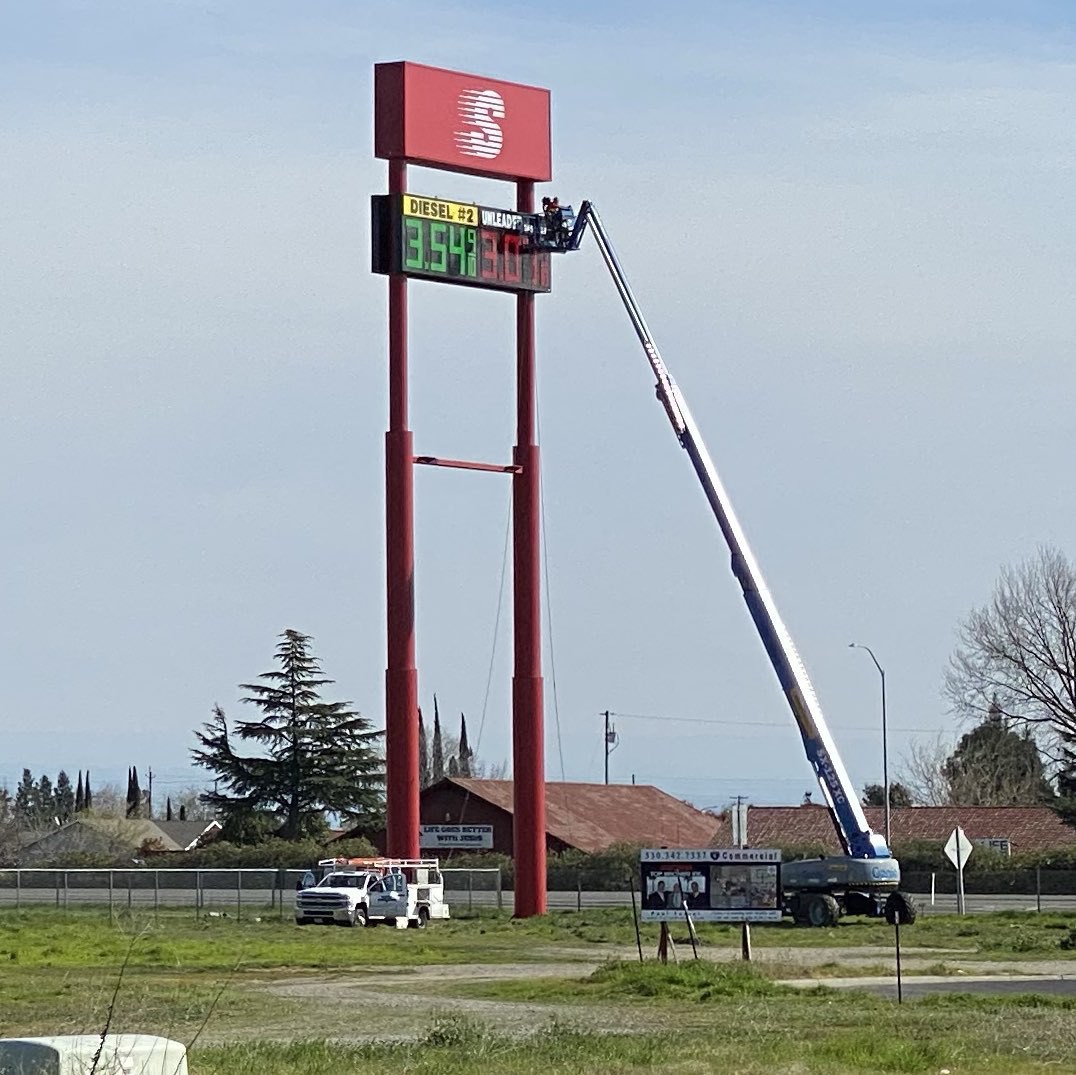Orchard
Cherry tree update: almost dark red! (and then they’re hopefully ripe and sweet; had two today and they were not there yet: tasted like early season supermarket cherries.)
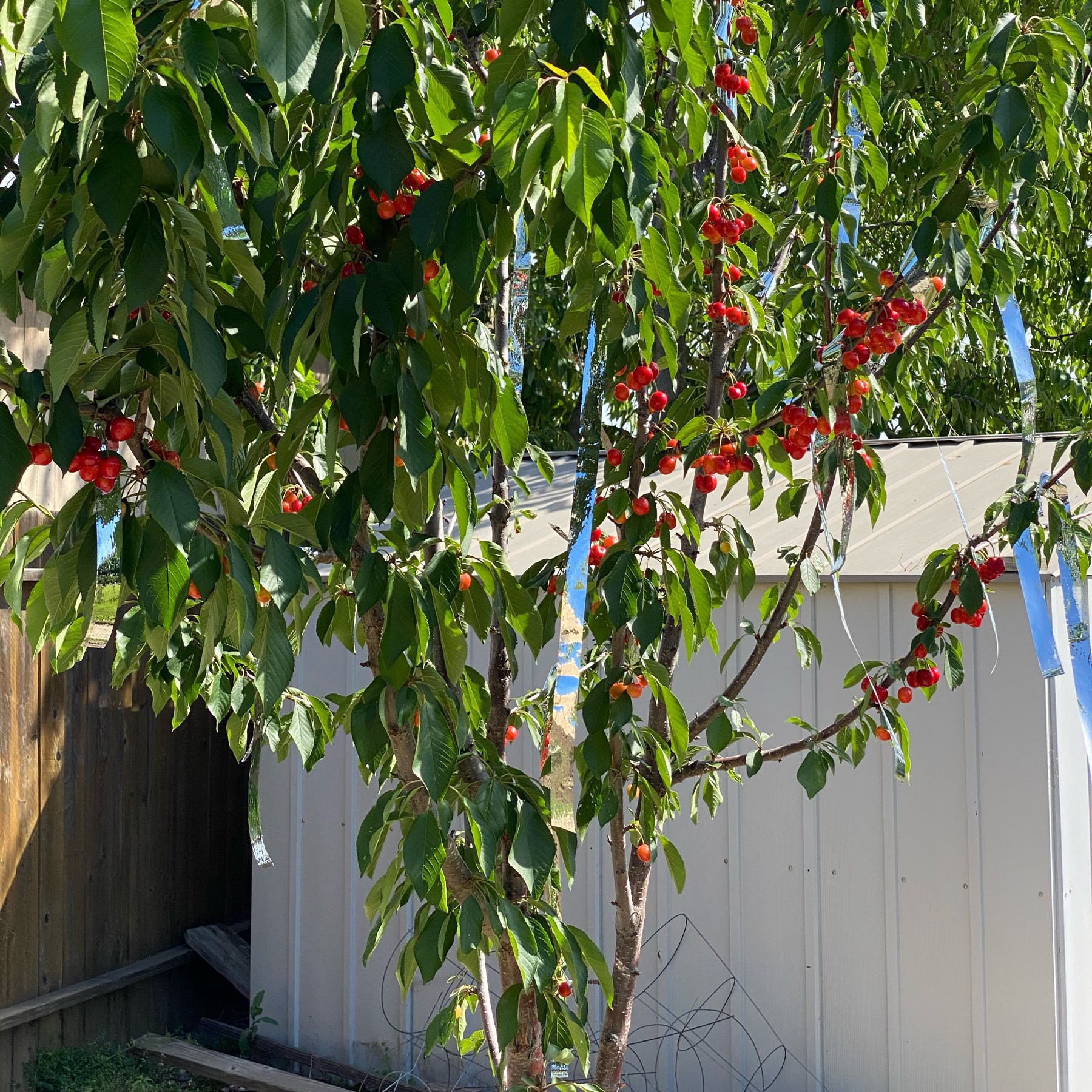
Metallic flagging and a fake hawk to discourage birds from the cherries. The blue jays are smart and eventually don’t care but smaller birds stay away. Just say no to critter killing netting.

Our sweet cherries are looking tastier everyday.
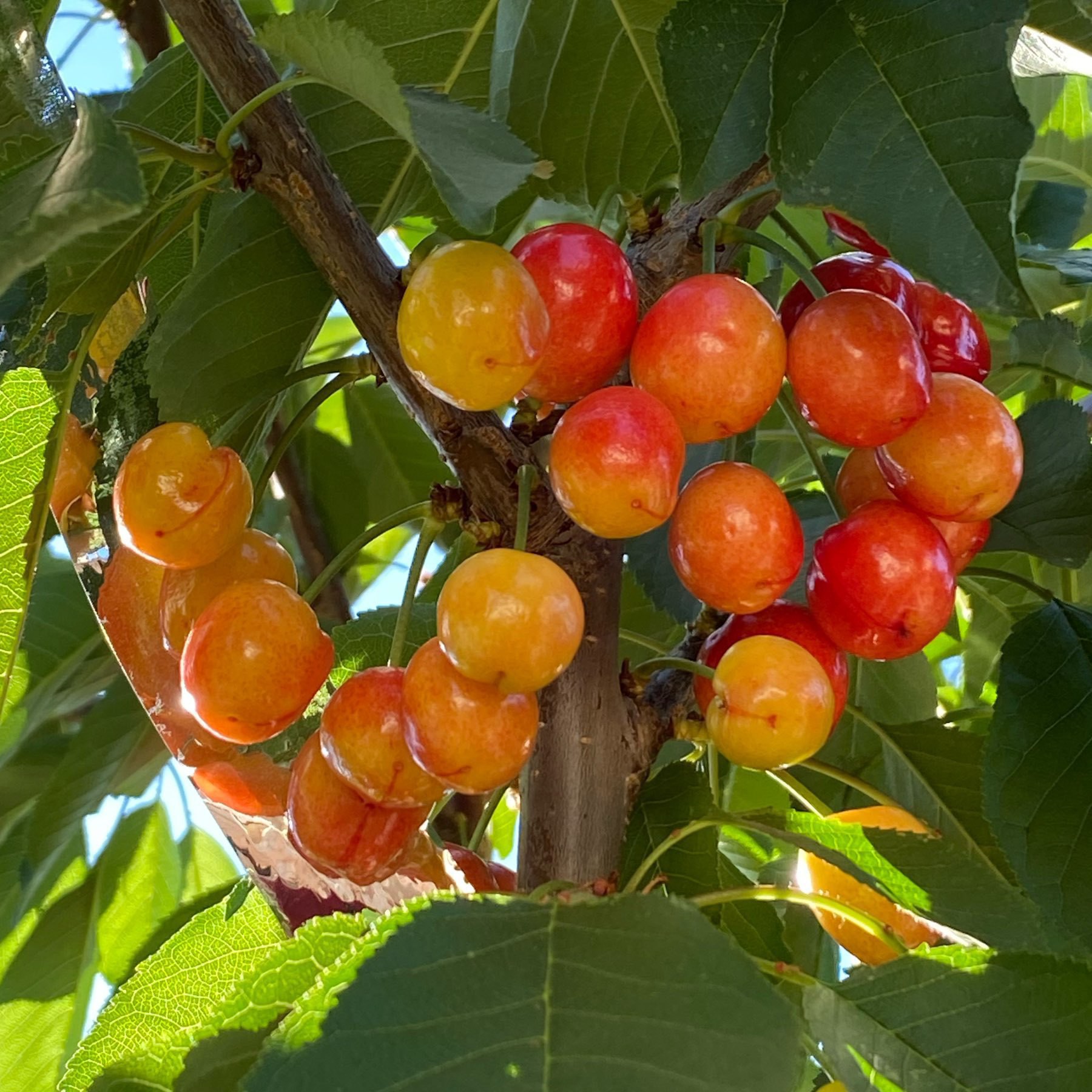
Pineapple guava (Feijoa sellowiana) flowers.
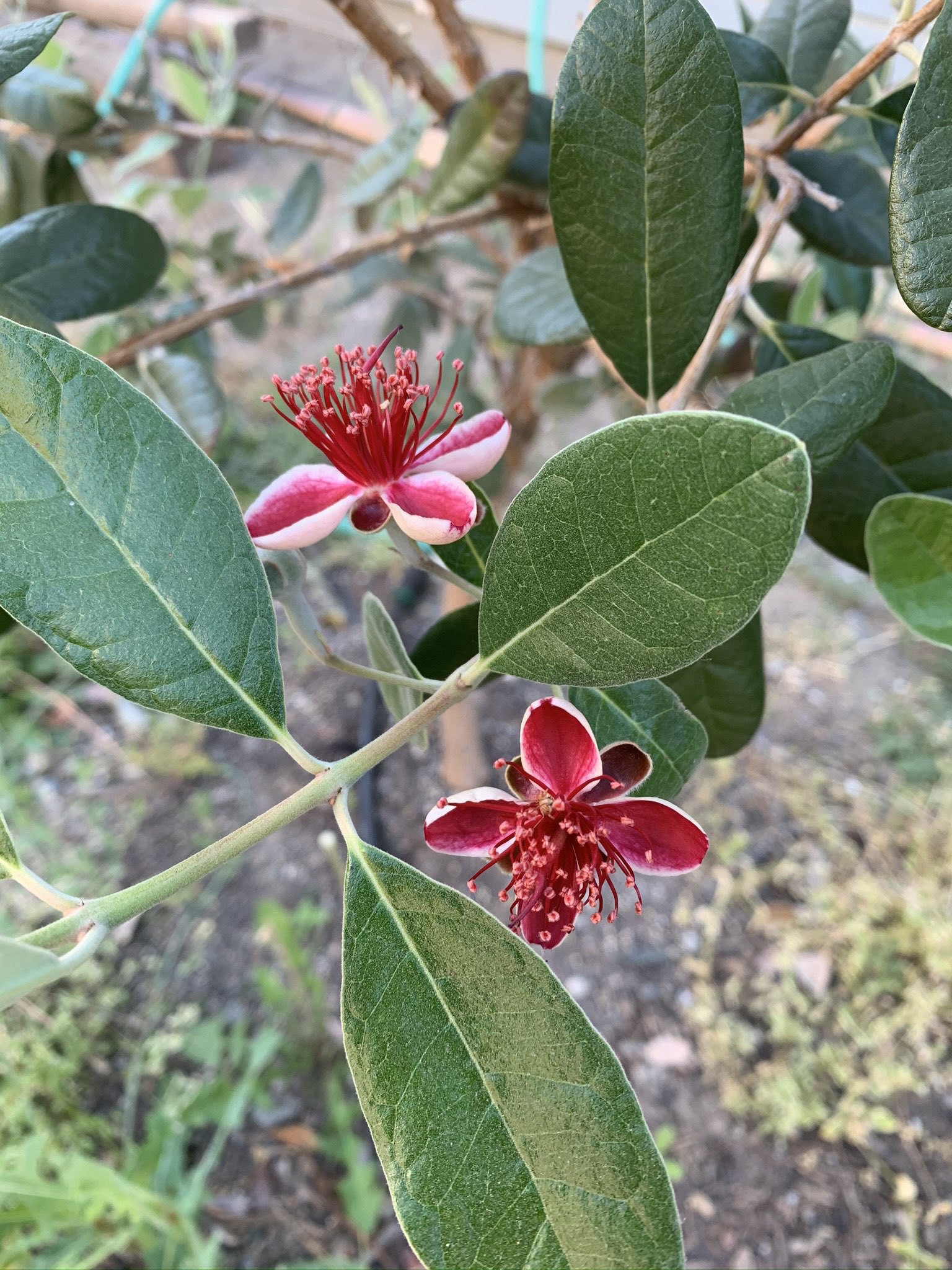
Cherries on the bark beetle-caused malnourished, unshaded branches (to right) are blushing fast (May not be very good cherries). The resident blue jays should stick to those branches.... they ignore the metallic tape with malice in their dinosaur eyes...
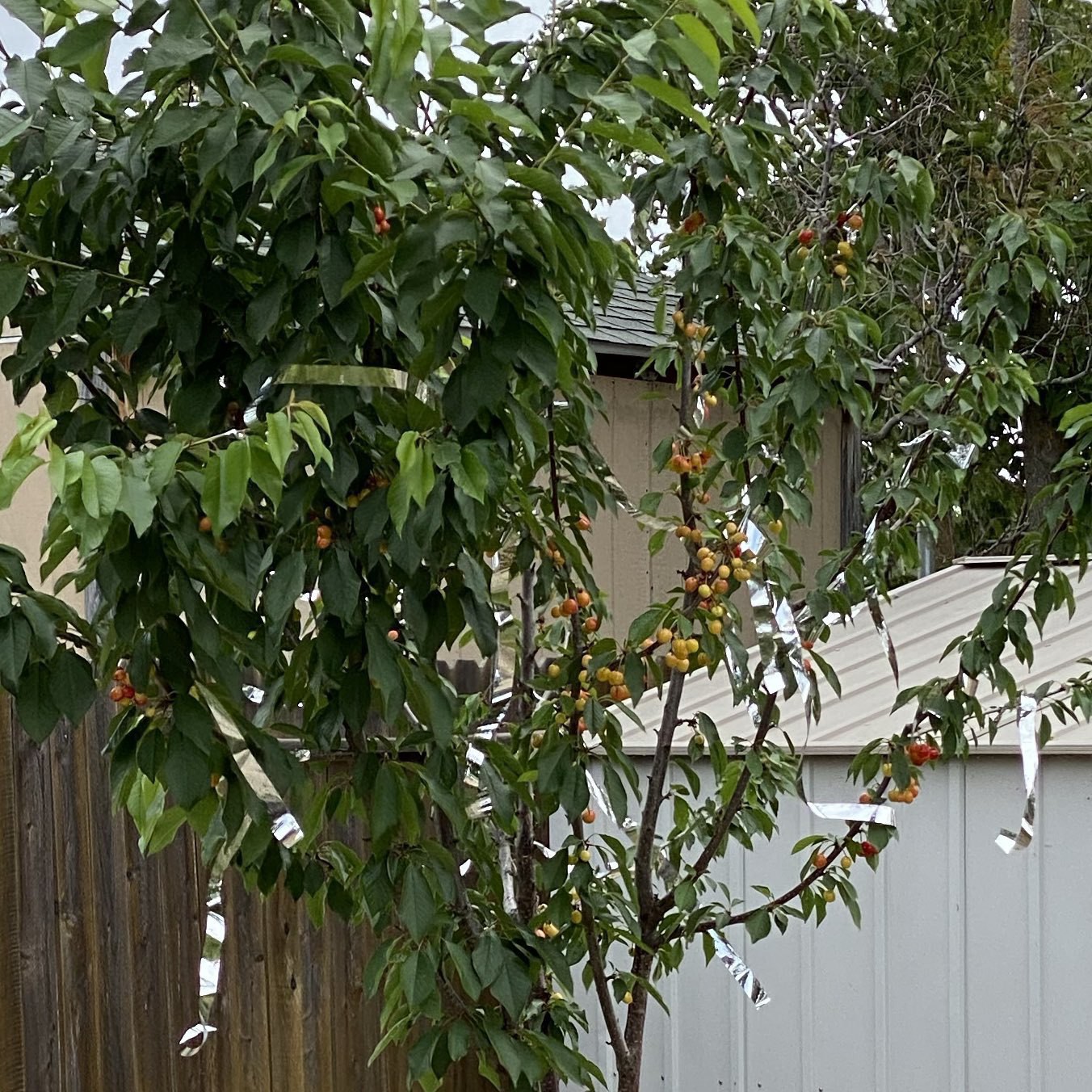
Pineapple Guava (Feijoa sellowiana) flower bud. These flowers are going to be huge.
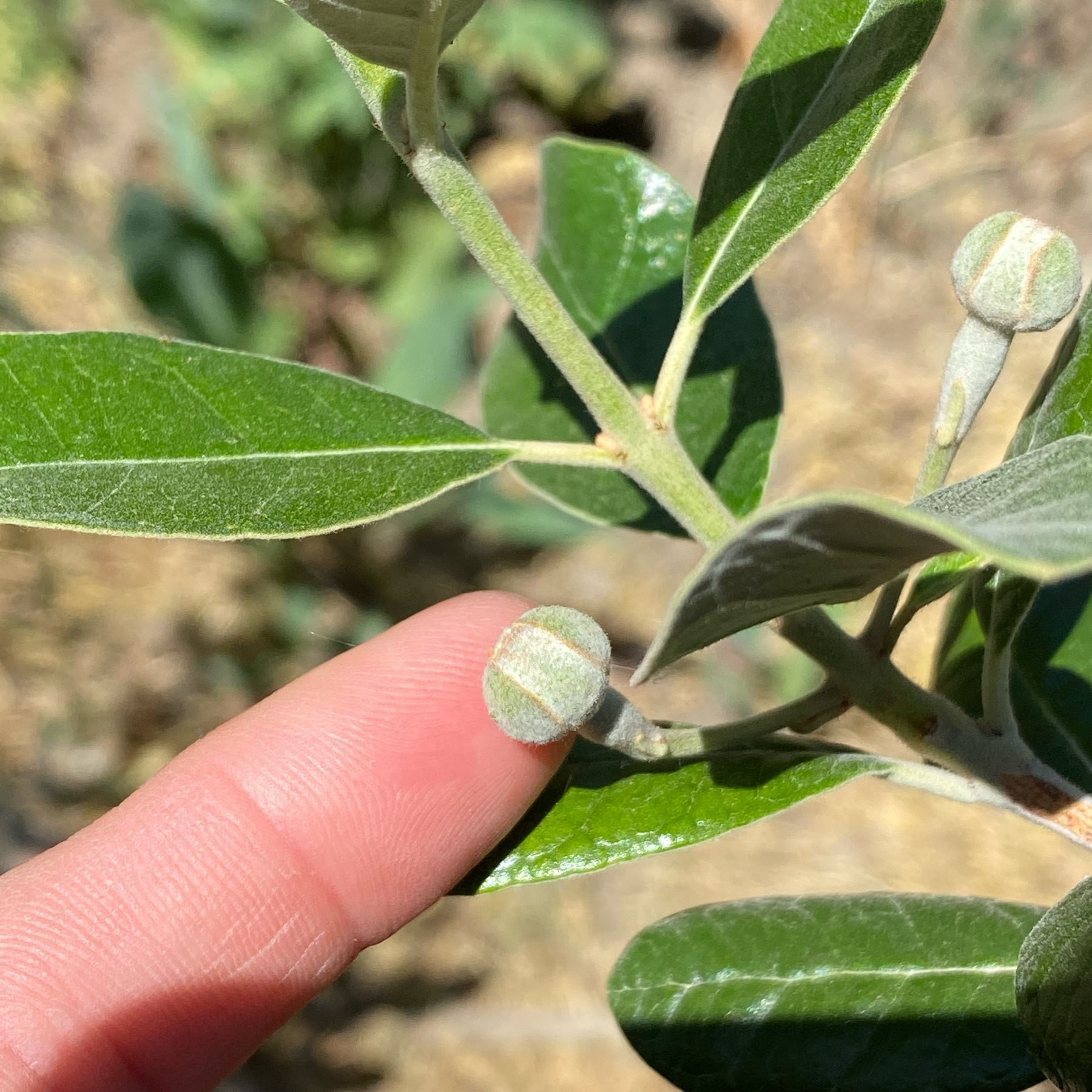
Fruit Tree Irrigation: an Experiment
For several years I’ve watered my fruit trees using a Generation 2 Rachio controller and their irrigation method called “Flex Daily”. This method relies on many variables, a few of which I can only make good guesses at. For example, my soil’s Available Water Capacity from the U.S. Soil Survey. Flex Daily on Rachio is really designed for watering lawns, and I don’t care about lawns. I water fruit trees with unevenly spaced emitters. So the other advanced zone variable that’s not easy to determine due to my needs is the Nozzle In/Hr setting.
Here is a formula I use to convert from my drip emitters GPH to In/Hr:
(96.25 * Q * 0.0167) / A = PR
Where Q is Gallons Per Hour (GPH) and A is, in the case of trees, drip line or canopy area. 0.0167 changes GPH to the needed Gallons Per Minute (or divide by 60).
Rachio’s Flex Daily method worked fine for the past few years, though it seemed to water too much in a day and too infrequently causing regular water stress in certain trees. I figure that’s because Flex Daily relies heavily on the AWC and root depth. It then waters to what it expects is the root depth.
Recently, in preparing for this irrigation season, I learned about a daily tree watering model from the University of California’s Center for Landscape and Urban Horticulture. I had always wondered what model local orchards use, and I bet it is this one because I have often seen the almond orchards watered daily. But with Rachio’s Flex Daily, it was every 3-5 days. According to the Center for Landscape and Urban Horticulture, deep watering of trees can actually be disadvantageous as water can leach nutrients to a depth where roots would never reach them. They also write that when using drip emitters, depth of watering isn’t as important for trees as the volume of water they actually need. I assume from this that the bulk of tree roots that take up water are shallow.
With Rachio’s Flex Daily, I had the root depth set to 8 inches for my trees. According to tree (crop) evapotranspiration (ETc) needs, it’d attempt to water to that root depth. But my settings would have to be perfect for that to work right — especially the Available Water Capacity. I’d also have to be reasonably certain about my tree root depths, which I am not! I doubt my settings are good enough for the watering depth to be accurate, especially as soil is not homogenous. Was this Flex Daily method watering well beyond the tree roots? Without digging some deep holes I’d never know. So the Center for Landscape and Urban Horticulture’s daily watering method for drip immediately appealed to me. All I need to know, for this method, is the tree’s drip (canopy) area and the tree’s Plant Factor (or its daily water usage):
Gallons = ETo × PF × (R× R × 3.14) × 0.623
Where ETo is the reference evapotranspiration (figured from grass), PF is the Plant Factor or Crop Evapotranspiration coefficient, and R is the radius of the tree’s canopy. 0.623 is the conversion to gallons. ETo * PF results in the inches of the plant’s water use.
To get the water needs of my trees, I use the Irrigation Training and Research Center’s California Crop and Soil Evapotranspiration (PDF) guide. For my Reference ETo Zone, I use the Typical Year table to find my tree type, and then find the inches/month for my trees. I can use the above formula to calculate the amount of gallons needed per tree and then calculate, based on the total GPH of emitters under the trees, how long I need to water them. Of course, it is key to divide the monthly ET by that month’s number of days in order to get the average day’s water use.
The following image is extracted from the California Crop and Soil Evapotranspiration book. I’m interested in the monthly values for the bottom four rows. If you divide a tree monthly average by the grass reference ETo, you can get the Plant Factor or evapotranspiration coefficient. Divide the value for a tree on a given month by the days in that month to get the tree’s average water use in inches per day.

If all my trees were the same age and the same maturity, trees of the same kind (e.g., stone fruit or citrus) would have the same GPH per tree. They are not. So to get the same Nozzle In/Hr at each tree, I have to balance the emitters in each irrigation zone. For example, in my Stone Fruit zone, my mature and stingy apricot has emitters that total 12 GPH while at my much younger, prolific but severely bark beetle damaged Lapins cherry tree, has 2 GPH’s worth of emitters. But because the apricot’s drip line area is about 78.5 square feet and my cherry’s drip line area is 12.56 square feet, their inches/hour balances out to 0.246 in/hr for the apricot and 0.256 in/hr for the cherry. Close enough! So in this case, I can run the zone for nearly 18 minutes in April and both trees will (hypothetically) get the amount of water they need on a daily basis. This, of course, assumes the soil is suitably well draining and water can soak down some depth into the root zone. For the most part, this is the case for my trees.
So by balancing a watering zone’s trees to have similar inches/hour, I can figure the amount of time needed to water the zone:
Gallons per Day / Gallons per Hour * 60 minutes per hour = minutes per day
(phew; the dimensional analysis would make more sense if written symbolically)
And, I can be as granular as I want at calculating the water need. For now, I’ve calculated water needs for each month using my trees’ average monthly water use. I have setup Fixed irrigation schedules for many different months using the Rachio Gen 2 controller for almost every month (if months seem similar in water use for a zone, I use one Fixed schedule). Each schedule has the month’s average ETo in the name, So when evapotranspiration regularly matches a set schedule, I’ll switch to that schedule (assuming the phenology makes sense; some trees have higher water use during certain parts of the season). I no longer need to use Flex Daily. Each zone has its own watering time based on its daily water needs. Rachio will still skip irrigating if enough rain happens, but none of the Flex features are in use now. I started this daily irrigation regime on April 22. It’s too early to say how the trees are responding, so I’ll have to report back on this big experiment.
Rachio Fixed schedules that I’ve created to suit ET and tree phenology.
.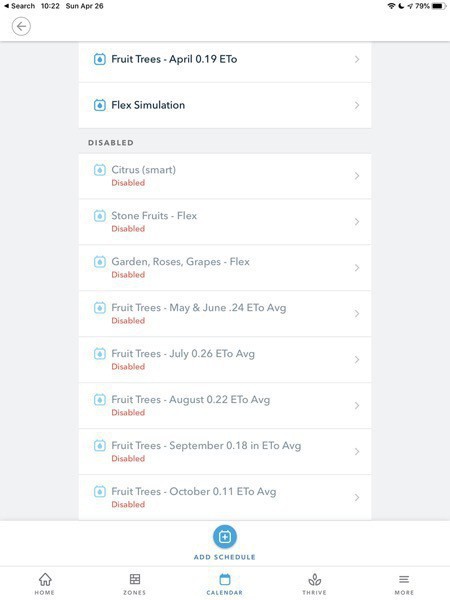
For Earth Day, bees on the elderberry and the avocado.
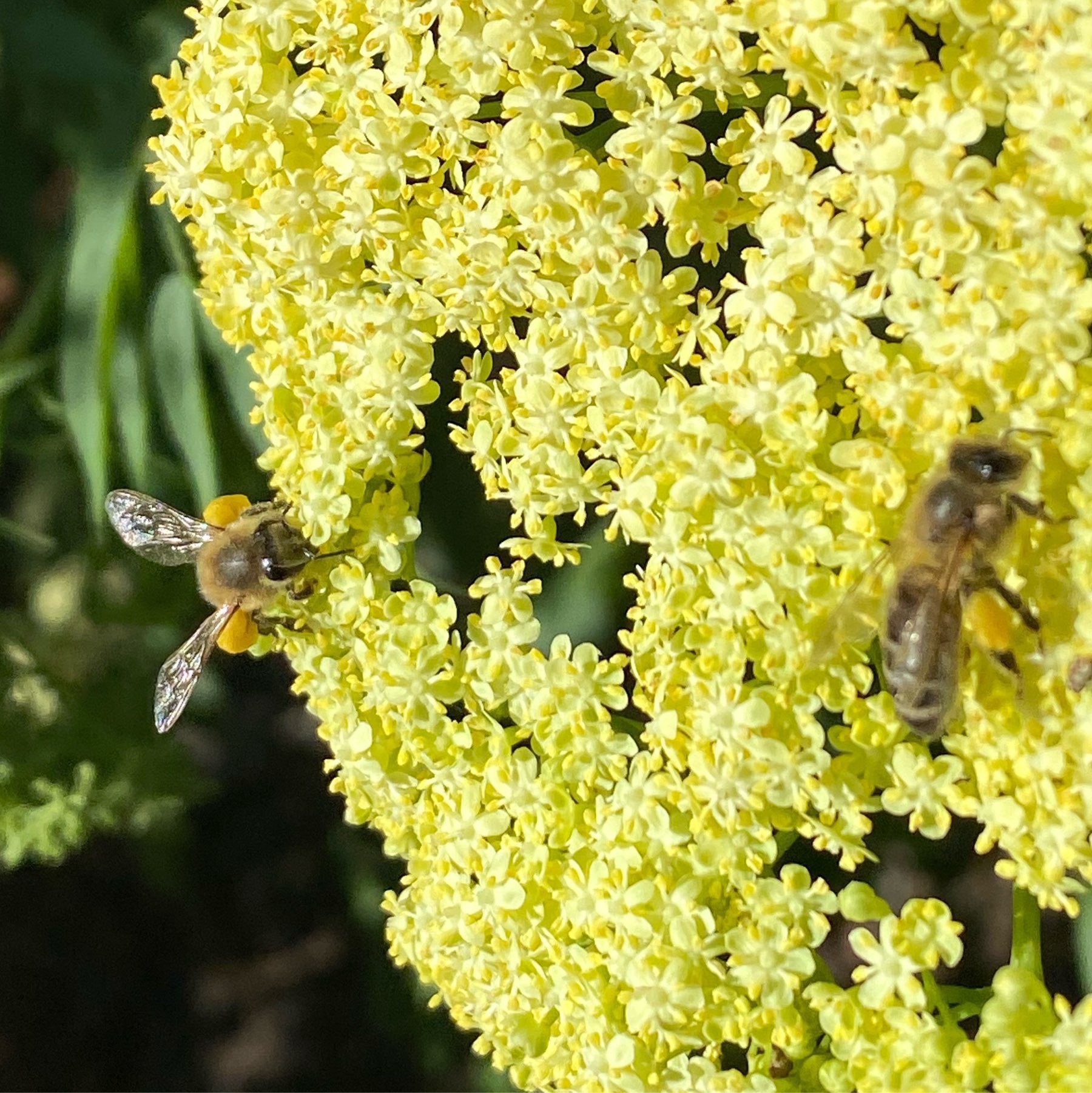
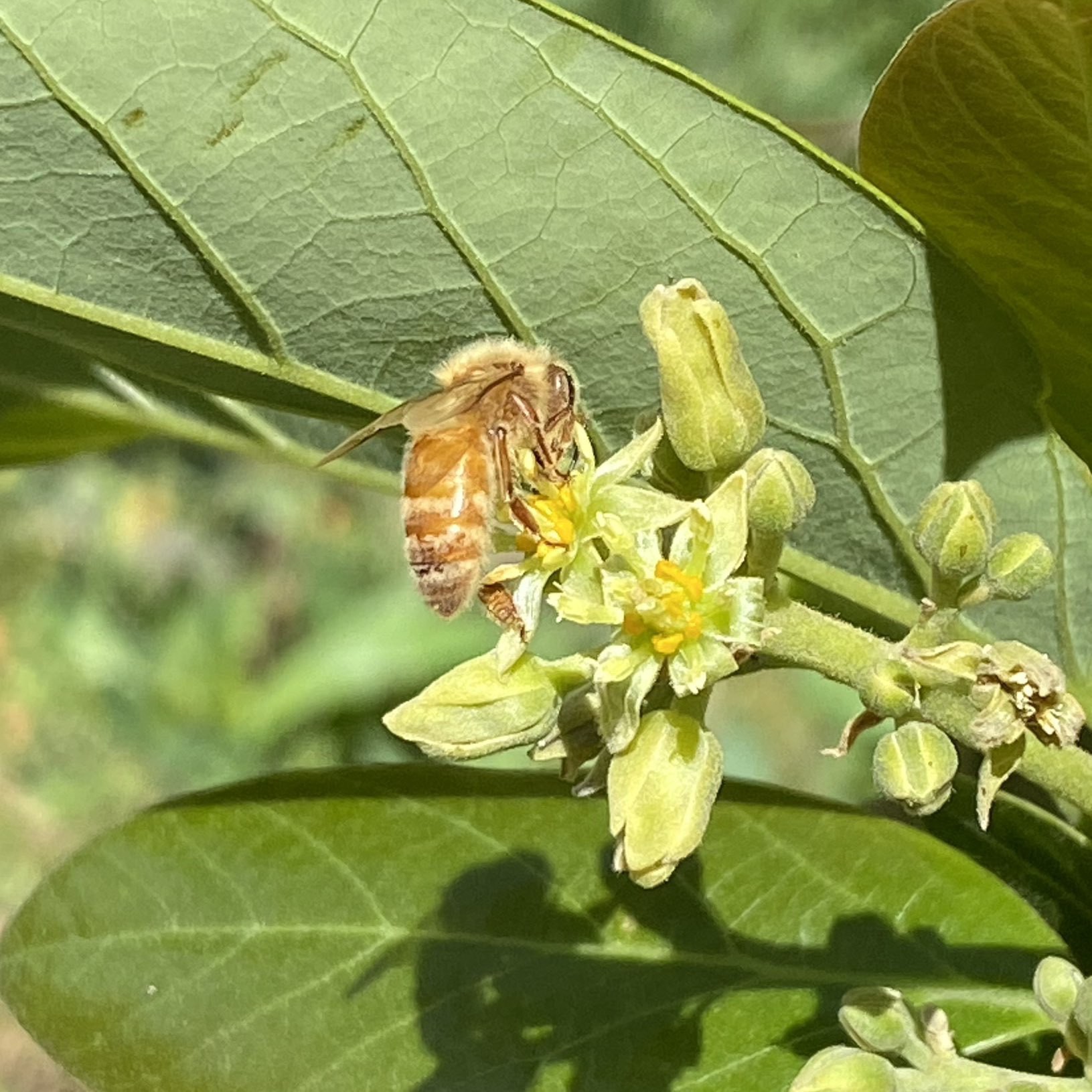
Got to pay attention to notice avocado flowers. Our “Bacon” Avocado tree is flowering. Our “Mexicola” variety is not— too bad because they’re type A and B so would have pollinated each other.
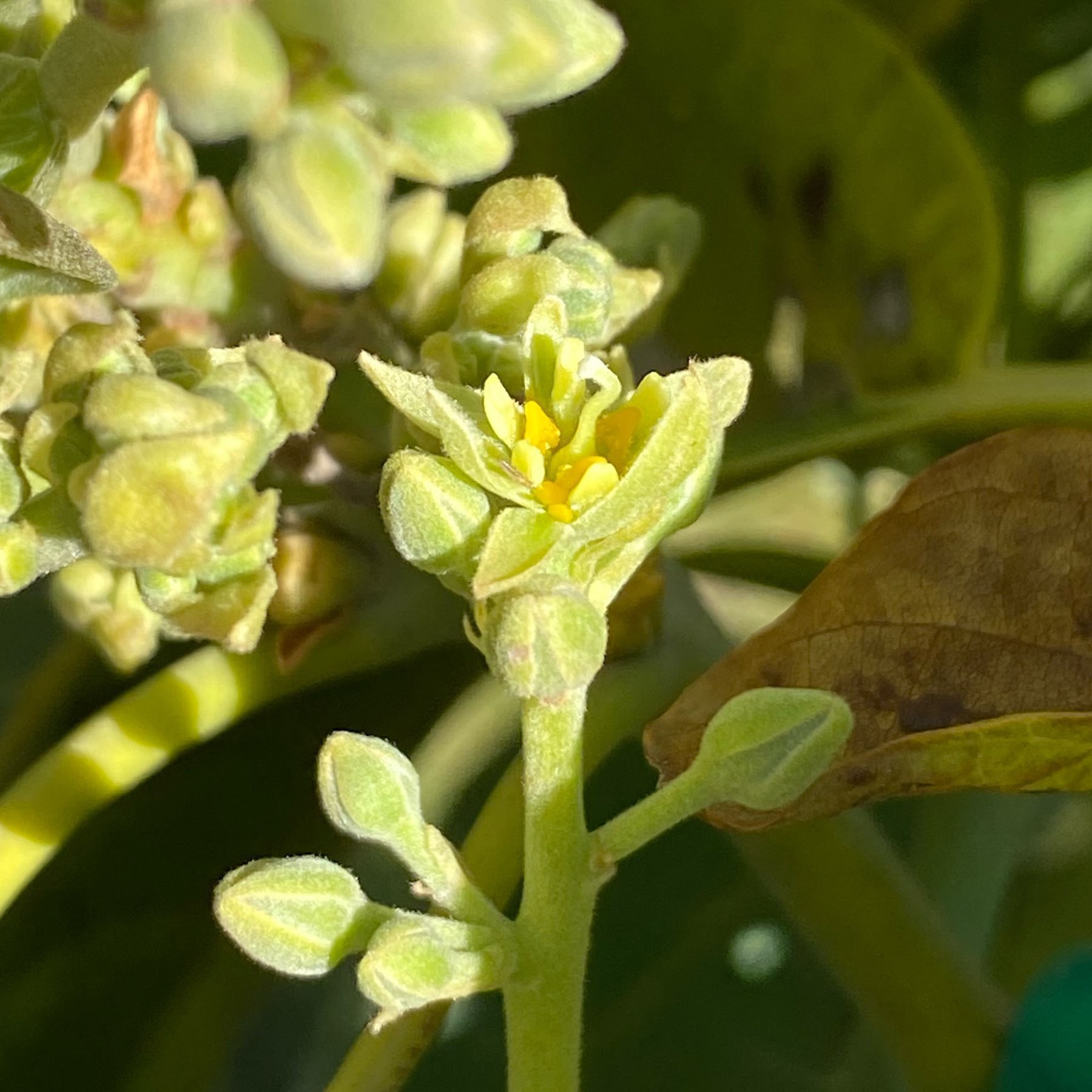
Got a few Apricot fruits to set... in a few weeks they may drop as the tree balances its energy.

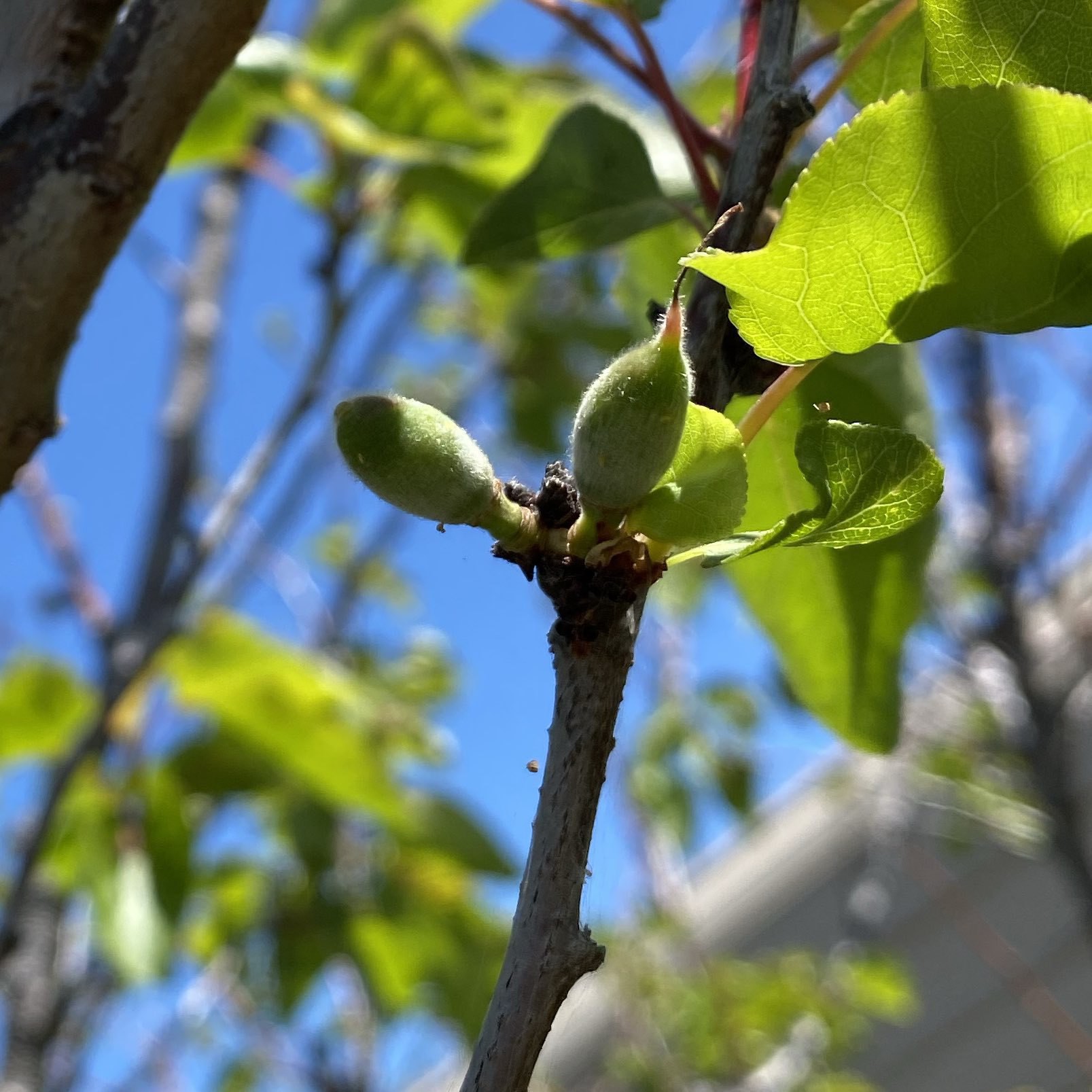
It’s high time we start taking photos behind the flowers. Apricot flower.

Cherry tree in full bloom.
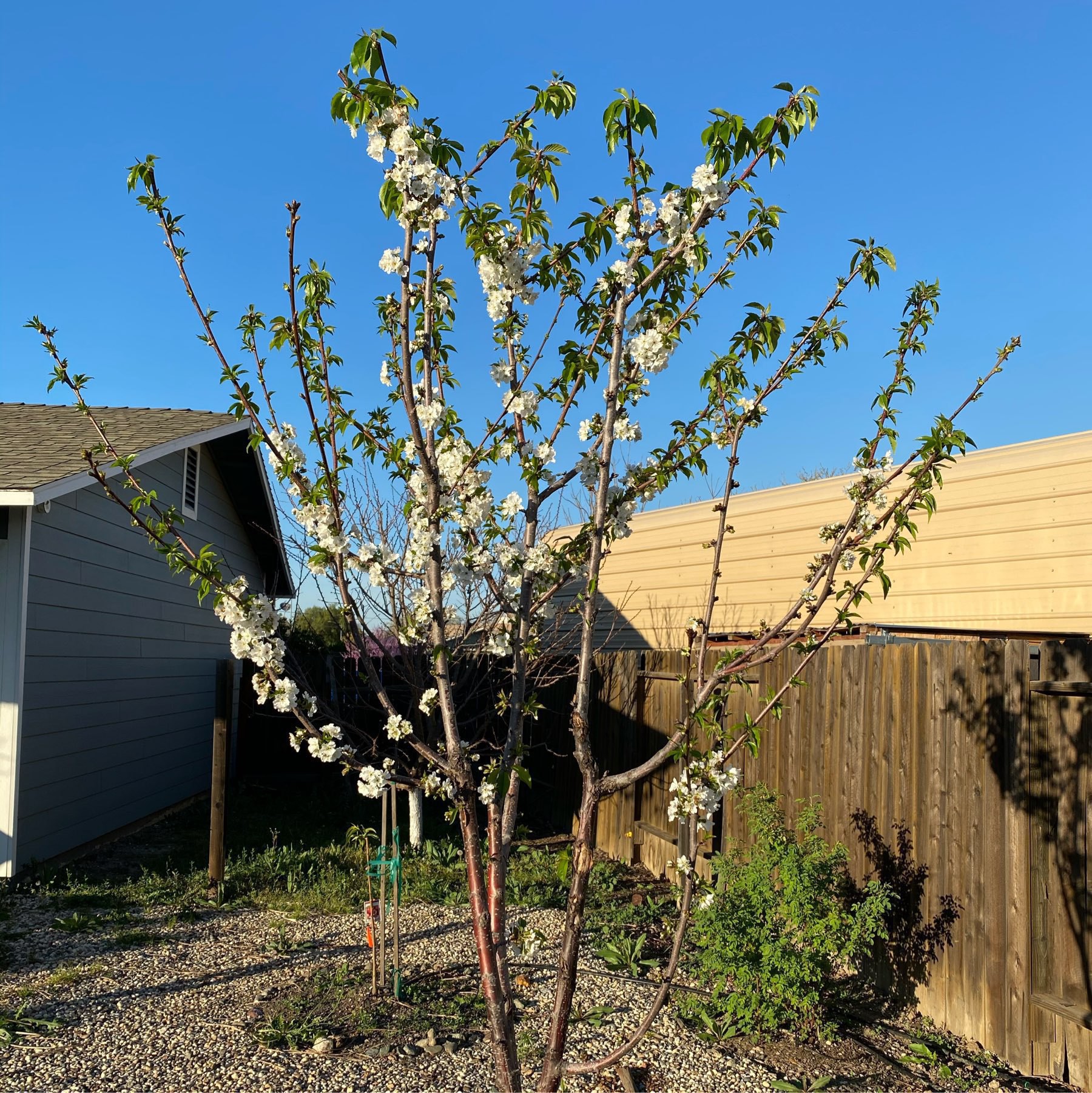
This morning’s view out the backyard window. The California Lilacs (purple!) are out of control. Mandarin in the foreground. Elderberry to the far left.
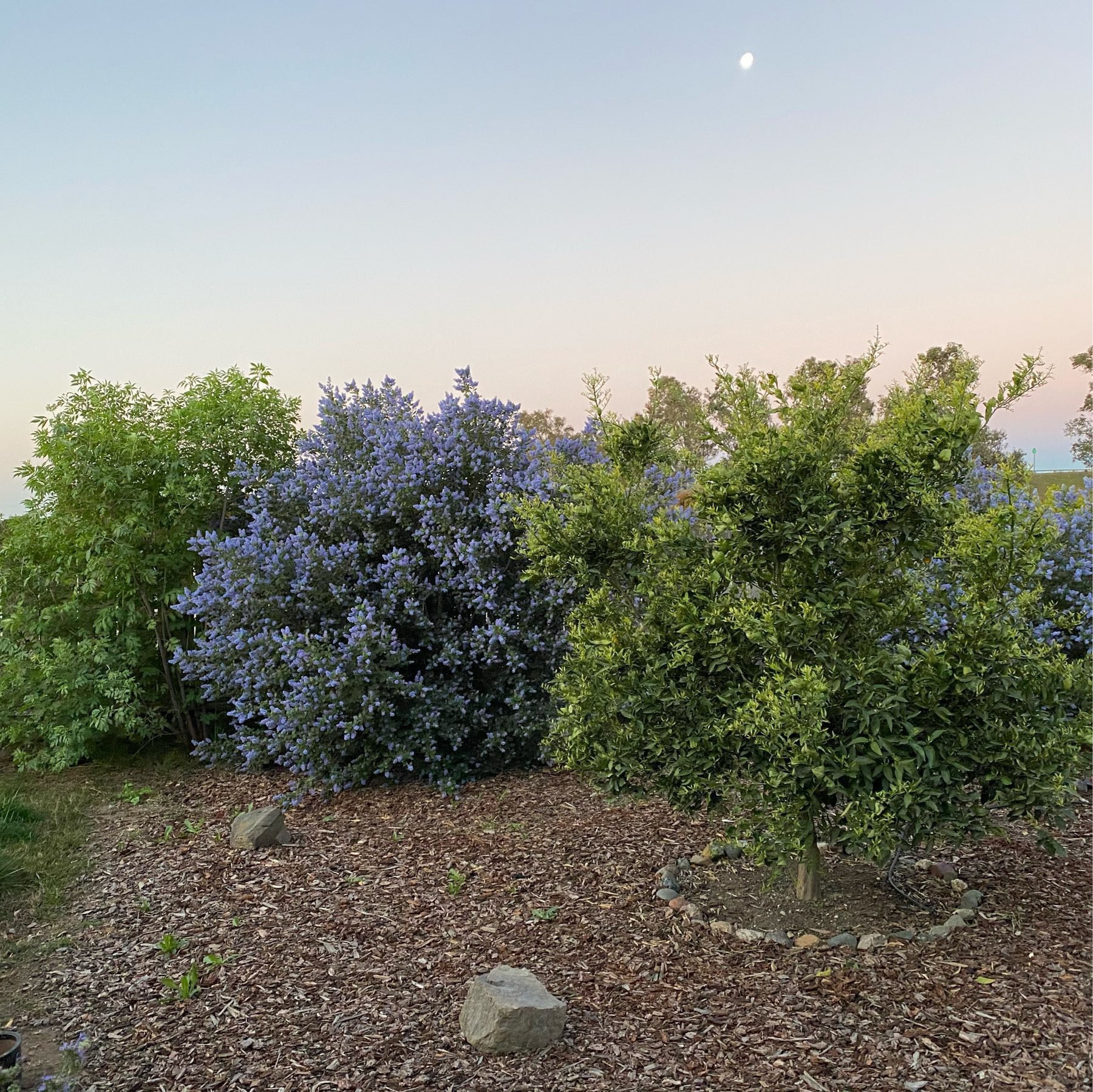
A successful section of our vegetative fence line screen. Elderberry (Sambucus mexicana), California Lilac (Ceanothus), and a Mandarin tree. A few years in the making.
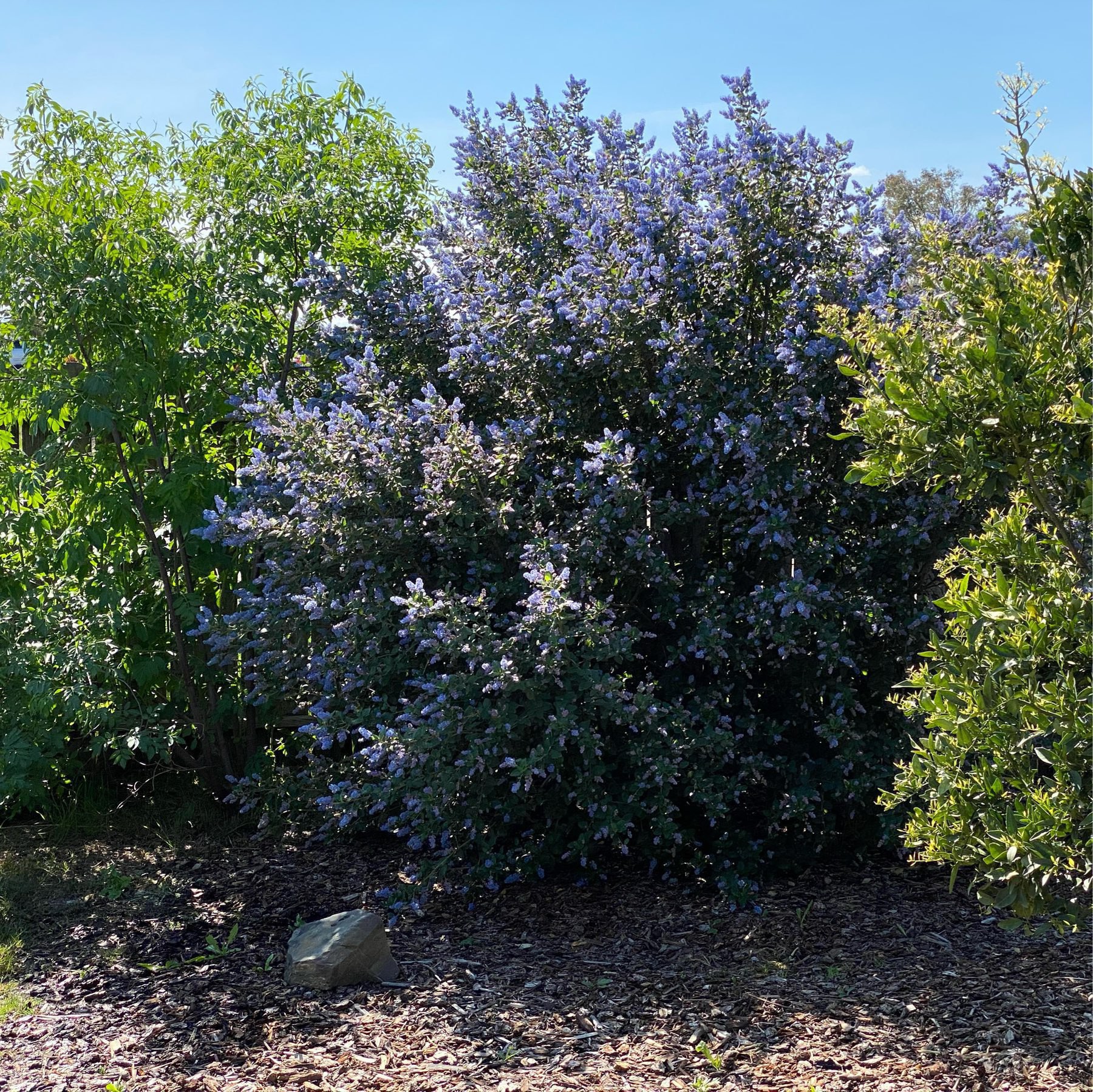
Our apricot had its first bloom today. A few weeks ahead last year. This tree has rarely yielded fruit. 🤞🌳
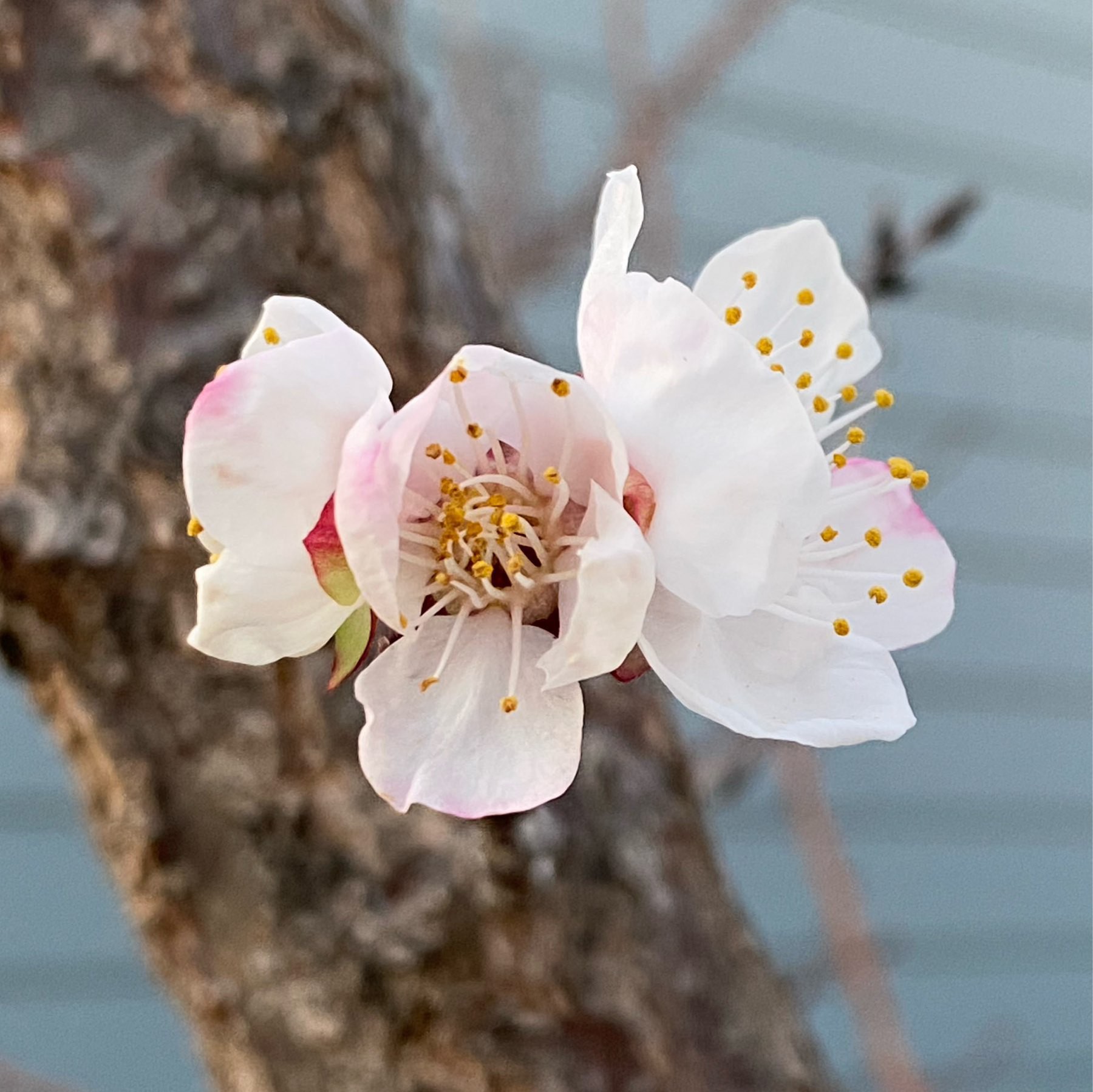
Our cherry tree had its first bloom today.
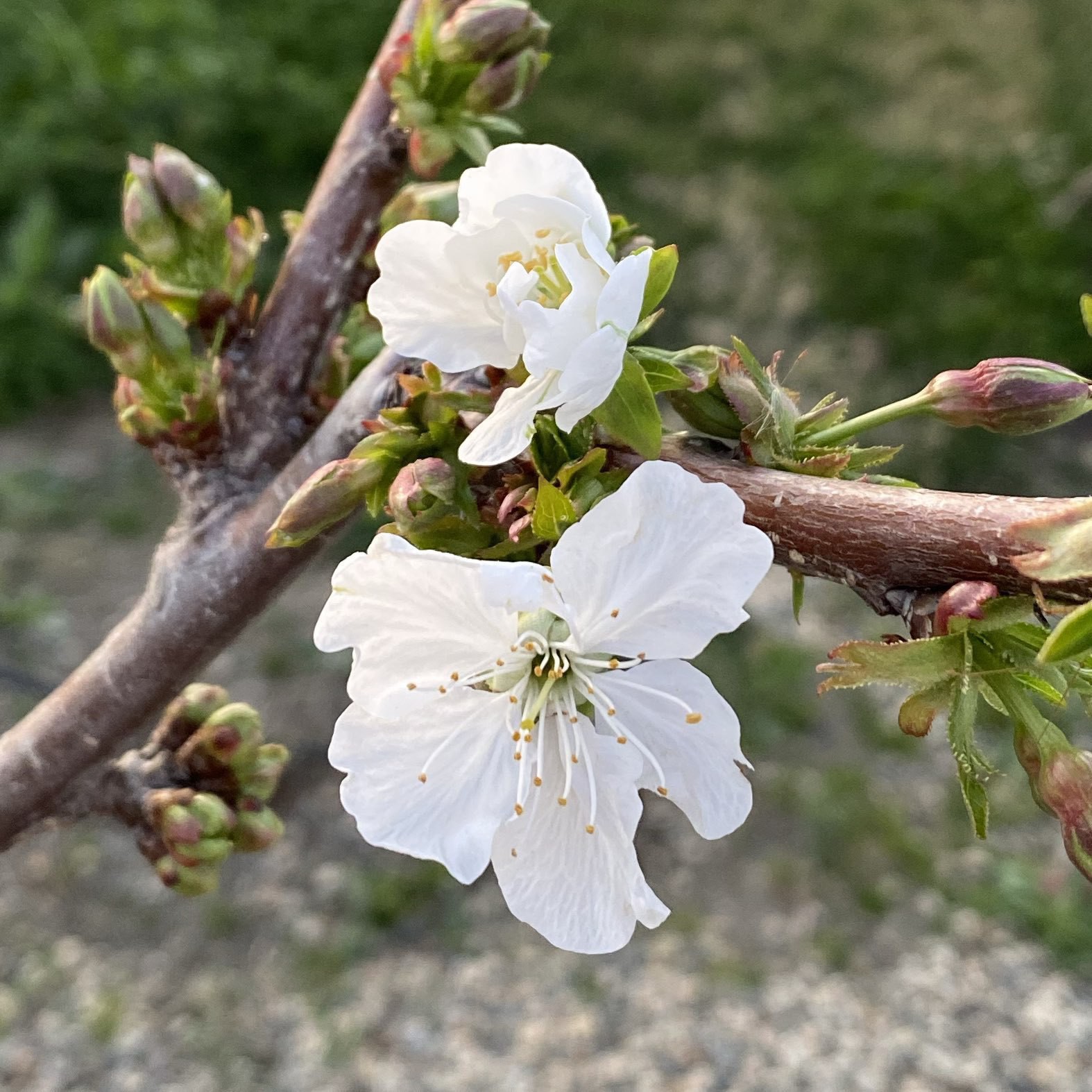
2020 Spring: Blooms to Come
Here in the Northern Sacramento Valley of California, the blooming seems to be happening all at once with the unusually dry and warm late winter.
Apricot is about to start blooming:
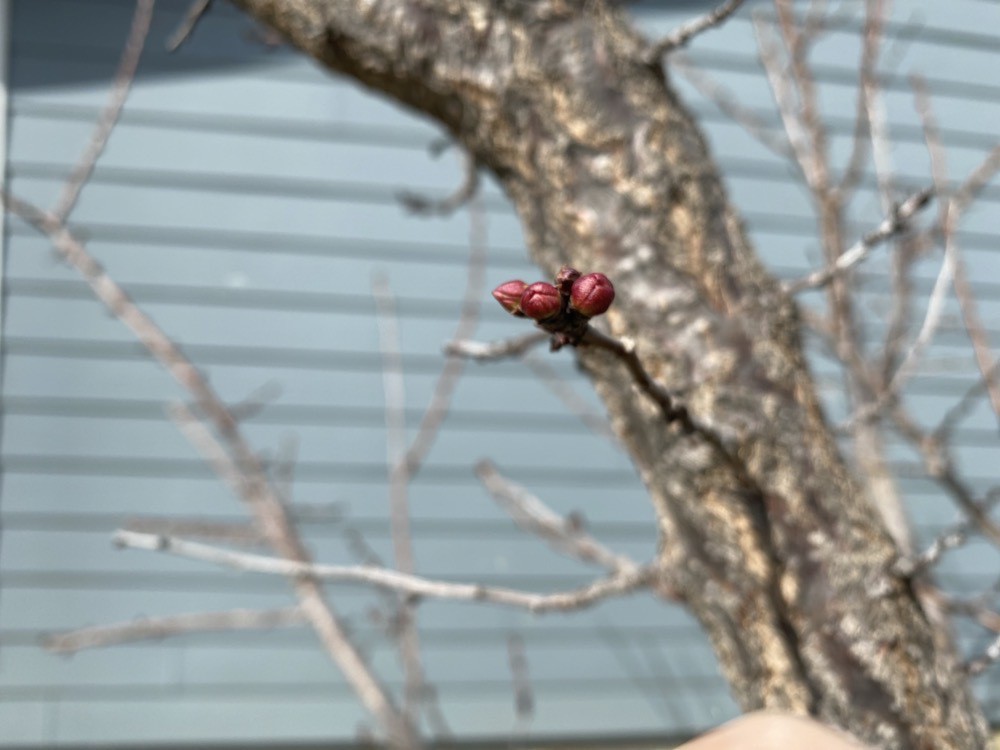
The cherry will be blooming soon too:
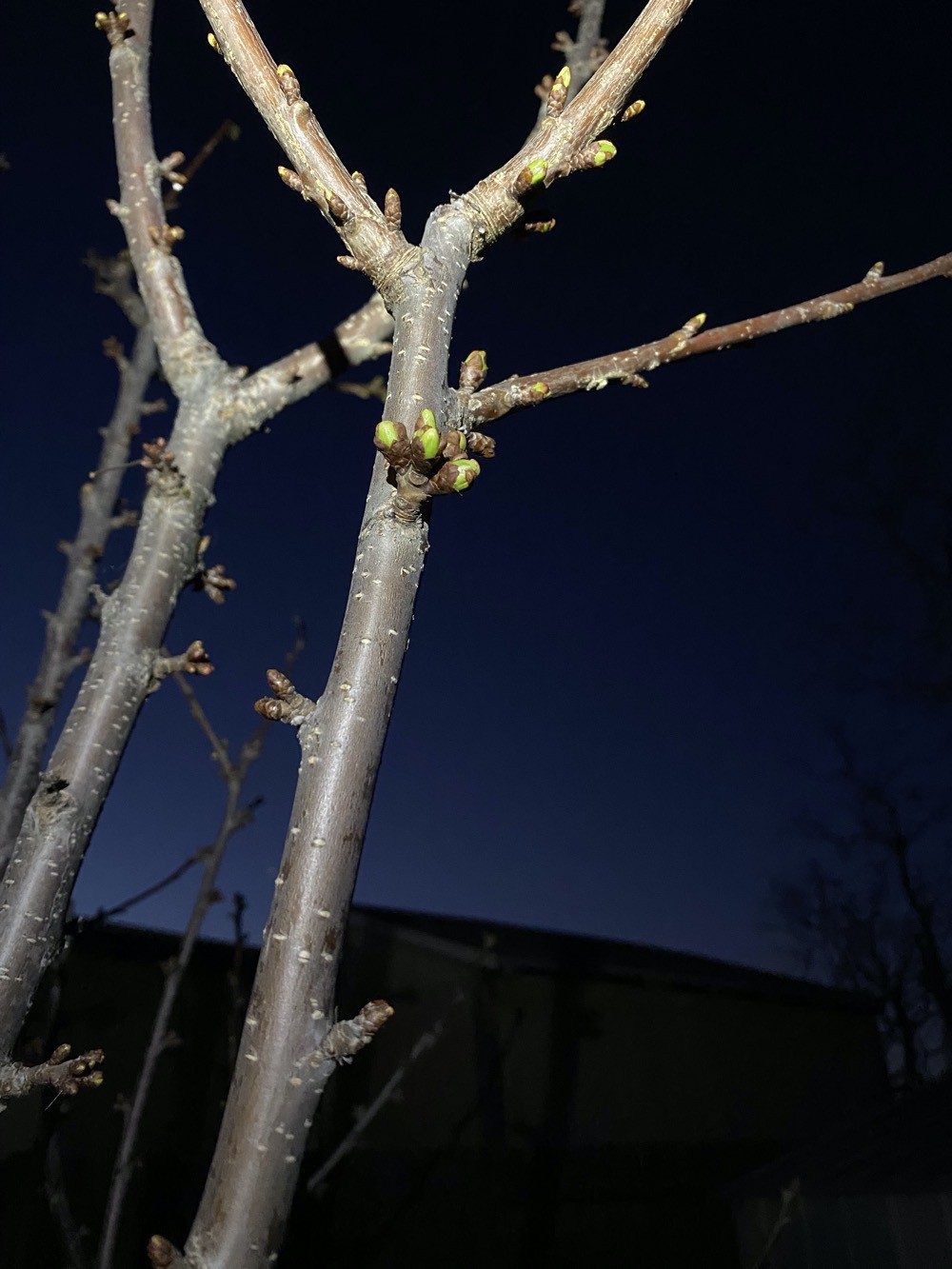
Western Red Bud (Cercis occidentalis) is about to bloom:
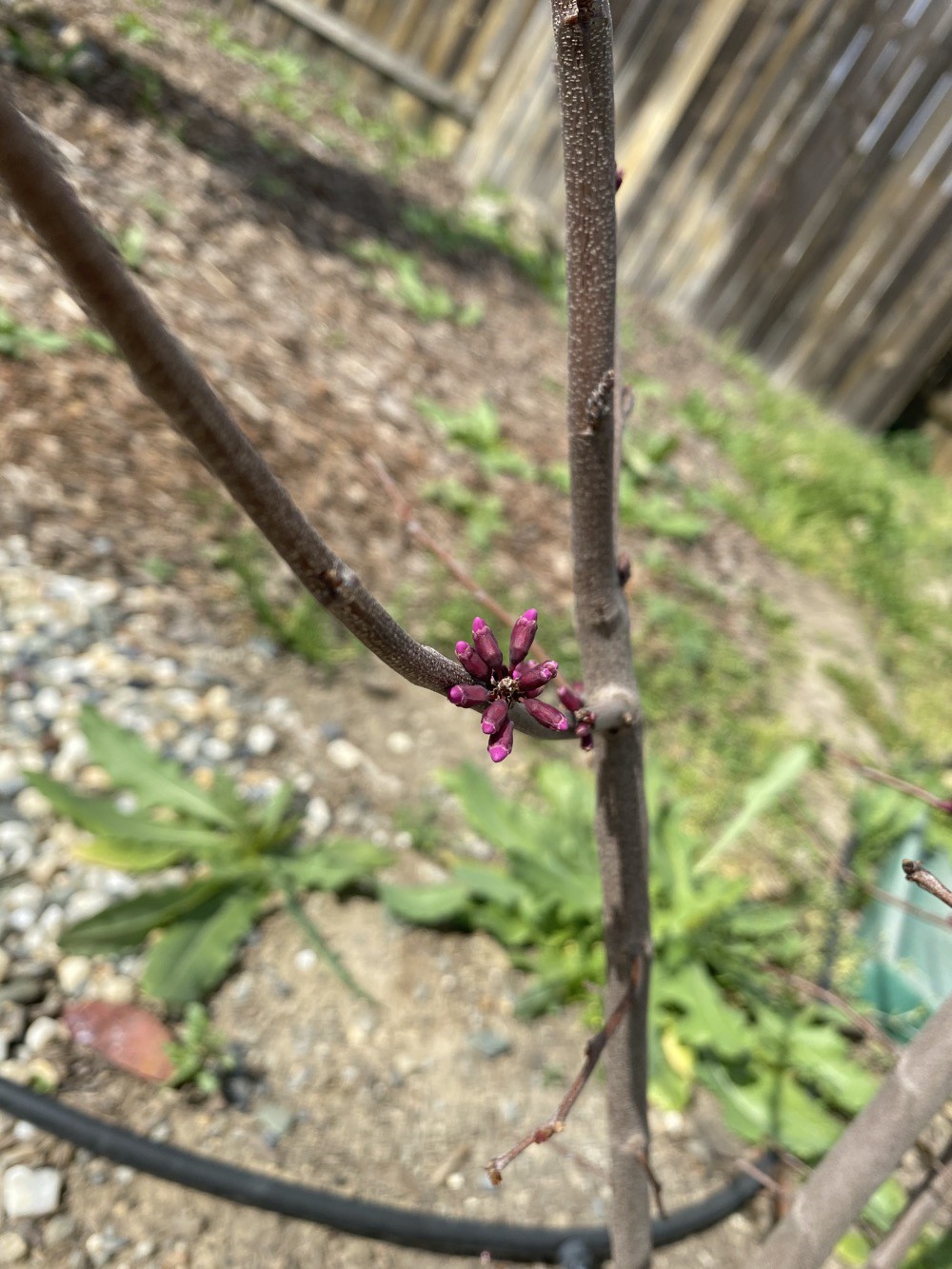
California lilacs (Ceanothus ) “Ray Hartman” are about to bloom:
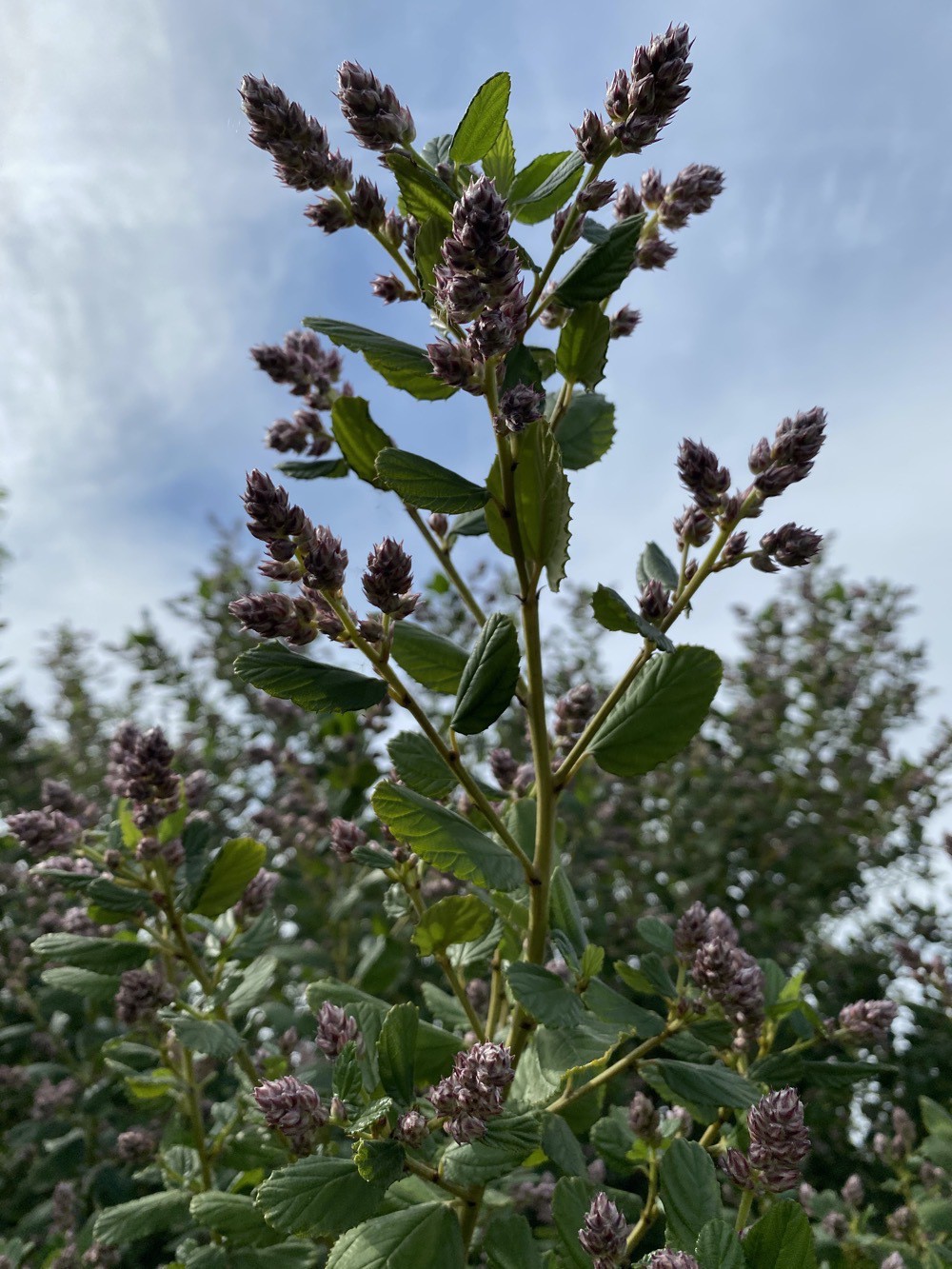
We love this red curry paste. Fortify it with fresh lemon grass! 🌶🌶🌶🥵

Glad I’m not below that cherry picker.
